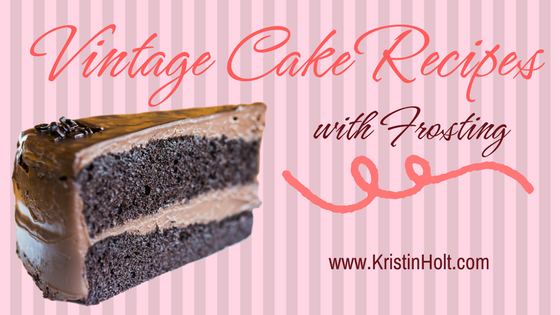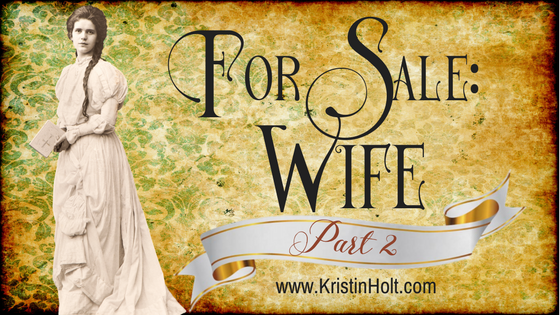
Victorian Fare: Cookies
Can you imagine baking cookies like a Victorian? Given many ingredients and measuring methods are unfamiliar to today’s cooks, I’ve shared brief info about those mystery ingredients and 19th-century measuring implements.

Can you imagine baking cookies like a Victorian? Given many ingredients and measuring methods are unfamiliar to today’s cooks, I’ve shared brief info about those mystery ingredients and 19th-century measuring implements.

True-to-history, Victorian (and one Edwardian) Cake Recipes published in era newspapers share not only a love for cake (as today is National Cake Day), but share a slice of life with amateur historians. Basic baking ingredients, methods, a desire to practice economy (“cheap” was a positive and desirable compliment)–all give today’s cake-lover a glimpse into America’s Victorian life.

In Part 2 of this blog series, I share 70 newspaper clippings from Victorian America, wherein reports abound that husbands have sold their wives. Prices range from $0.05 (5 cents) to thousands of dollars (US, Victorian). I provided price comparisons, just for impact. Throughout, I provided my opinions regarding TRUTH or JOKE. Ultimately, there had to be some of both. What a bizarre practice!

The decade of the 1880s proved among the most disastrous, desperate, life-threatening (and life-taking)–as winter in North America was at an extreme, the whole decade long. Climatologists have theories we understand today, but were unknown to our Victorian American ancestors. If you read a fictional book set in the 1880s, that touches on a mild winter, be surprised. Today, March 11th, is the anniversary of “the big one”.

This article contains the transcription of a brief recounting of one five-year-old boy’s letter to Santa Claus, published in Chicago Daily Tribune on December 26, 1883. The vintage newspaper report sheds light upon the attitudes and perceptions of our late Victorian-era ancestors, a young and well-to-do boy’s Christmas wish-list, and how his parents must have attempted to impress upon him an awareness of the good he might do for others. I find it interesting that residents of the Old Ladies’ Home are referred to as “inmates”.